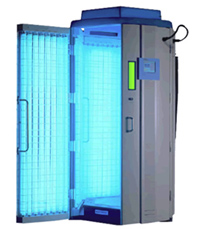This involves using only a small portion part of uvb radiation to treat the skin condition.
Narrow band uvb light therapy side effects.
What are the side effects and risks of narrowband uvb.
Narrow band phototherapy the most common light therapy limits the light wavelengths used in treatment to 311 313 nanometers to keep possible side effects in check.
Advantages of narrowband uvb include no need for oral medications no necessary eye precautions or risk of photosensitization and decreased risk of side effects such as photoaging and skin cancer.
Also known as bbuvb broadband uvb involves treating skin conditions like eczema and psoriasis with the full spectrum of ultraviolet b radiation.
During phototherapy sessions a machine emitting rays of narrow band uvb nb uvb light is directed at the area of the body being treated.
Although narrowband uvb is the only available alternative for nonsegmental vitiligo the drawbacks are numerous.
It can be prescribed to treat many forms of eczema in adults and children and helps to reduce itch and inflammation.
Frequent emollients should be applied to burned skin and if recommended by the therapist topical steroids.
Preliminary studies suggest narrow band uvb may be comparable in efficacy to standard puva and possibly superior to standard uvb.
Phototherapy for vitiligo is beneficial because it can target large areas of skin without the side effects of oral or topical medications.
Uva and uvb are wavelengths of light found in natural sunlight and are used for phototherapy.
Phototherapy also called light therapy means treatment with different wavelengths of ultraviolet uv light.
Long term exposure to ultraviolet radiation ultimately.
Narrow band uvb can result in burning just like sunlight and broadband uvb.
The therapy is often avoided in children less than 12 years of age.
Family members should also be involved in the process.
Acute side effects that have been reported are dryness itchiness and redness.
Broadband ultraviolet b 290 320nm narrowband uvb 311nm and psoralen with uva 320 400nm ultraviolet uv light therapy or phototherapy is one of the most widely used skin directed therapies for cutaneous t cell lymphoma ctcl.
Common side effects of light therapy phototherapy for psoriasis are minor burns and a higher risk of skin cancer.
It sometimes provokes polymorphous light eruption.

